(Part 1) Soft Launch: our key tips to succeed in launching a mobile game
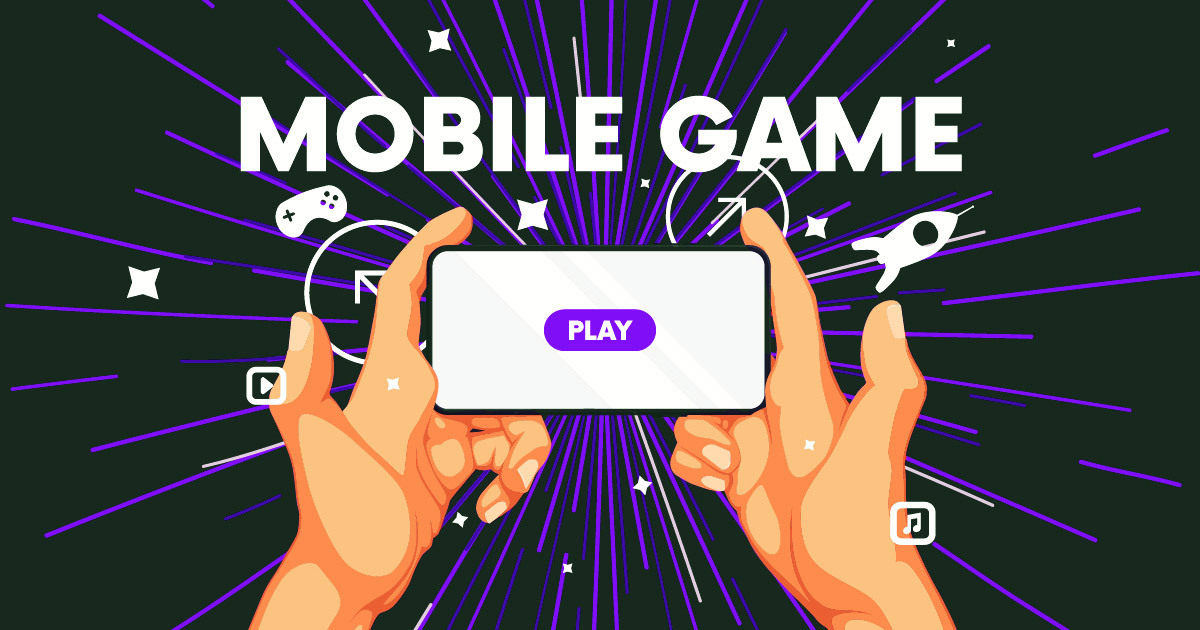
A game’s soft launch is full of excitement and tension and is always eagerly awaited by the production teams. After months, even years, of hard work, the culmination of their efforts is finally revealed to users. It is these users who will provide the first indications of the game’s appeal, quality, and monetization potential.
Based on its experience with over 35 soft launches, including games like Supercell’s Everdale, Bandai Namco’s Tekken, Gnejoy’s Tuscany Villa, Jam City’s Cookie Jam, Sandsoft’s Rambo Strike Force, and more, Addict Mobile shares its advice for a successful soft launch.
In the first part, we will cover the objectives, budget, timeline, and ASO. The second part will focus on selecting launch countries based on the defined objectives. Finally, the third part will address the analysis of KPIs during the soft launch and the decisions to be made accordingly.
A crucial step
Before launching your game on the market, it is necessary to test various aspects of it. This is what a soft launch is all about. This allows you to test, on a small portion of your potential audience, the different components of the game that you want to validate. User experience or FTUE (First Time User Experience), monetization, retention… for each step, there is a soft launch phase.
It’s essential to reserve an advanced version of the game for the widest audience to maximize revenue and the game’s longevity. The soft launch aims to gather maximum insights without burning through your audience, all with limited costs.
Note: Because the world of mobile gaming is so vast (hyper-casual, casual, mid-core, hardcore), some actions are not always strictly applicable. However, Addict Mobile’s recommendations cover the majority of cases.
Define the objectives, budget and timeline of your Soft Launch
Before launching your soft launch, it is necessary to define what you want to track, analyze or, work on.
Objectives
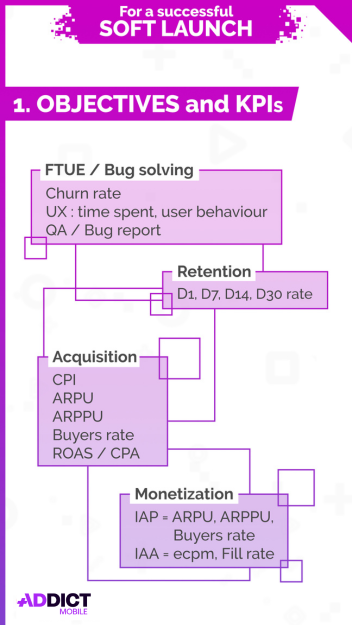
The definition of objectives will allow for the assessment of all stages of the soft launch as well as its duration. Simultaneously, and to optimally analyze all generated data, Addict Mobile encourages all publishers to install a tracking tool (such as Adjust, Appsflyer, Kochava, Branch, Singular…) to analyze key KPIs. Here are some examples of analyses for a soft launch.
1. UX & bug fixing (bug solving)
The aim is to observe how users interact with the game and to correct the major bugs. The goal is then to ensure that the next steps of the soft launch will not be affected by a major bug or a deficient UX.
For example: if all players stop at level 3, it is likely that the difficulty is too high, so a correction should be considered.
- KPIs to observe: Churn Rate, User behaviour, time spent, QA and, bug report
2. Acquisition & Retention:
“Acquisition will enable the injection of users into the game and determine the cost of a user and/or buyer to assess CPI and the profitability of the game based on user acquisition.”
- KPIs to observe: CPI, ARPU, ARPPU, Buyers rate, ROAS, CPA
On the foundation of the recruited user base, retention will provide an indicator of the game’s potential. Retention significantly defines the game’s likelihood of success or failure. You could have the best acquisition and monetization in the market, but if retention is too low, the game will be a flop.
- KPIs to observe: retention rate on D1, D7, D14, D30 / sessions per user/time per session
3. Monetization
Depending on the game’s business model, it will be essential to convert players into buyers (IAP) or to maximize your advertising revenue (IAA). By testing this aspect through the soft launch, you can assess the game’s ability to monetize and adjust monetization mechanisms to enhance your revenues.
- KPIs to observe: IAP: ARPU, ARPPU, Buyers rate / IAA: eCPM, Fill rate
The budget & the timeline
Defining these two elements is crucial to anticipate the costs of the soft launch and accordingly organize the game production team.
The budget is invested in acquisition to recruit users. It will depend on the number of users needed to gather relevant data for KPI analysis.
- How many users do I need to recruit?
- In which country and therefore at which CPI?
- For how long?
Additionally, it’s important to define the soft launch duration using a clear schedule detailing launch stages, iterations, etc.
A soft launch is often longer than expected since more game updates are often required than initially planned. Nevertheless, it’s important to budget and schedule in advance. Indeed, the soft launch period generates little to no revenue, and costs can be significant in production and acquisition.
Improve App Store Optimization (ASO)
Before diving into the soft launch, plan to test and optimize your game’s store page by focusing on ASO.
As the name suggests, ASO or App Store Optimization involves optimizing your store page on Android and iOS. It is an essential element not to be overlooked.
- It helps convert a maximum number of users landing on your store page.
- It contributes to optimizing the acquisition costs of your advertising campaigns: it encourages users who click on your ad to download your game.
A store page that gains 5%, 10%, 15% conversion is a huge asset to maximize installations and their costs.
The soft launch is, therefore, the ideal time to test and iterate different versions of your store page. You can A/B test the logo, title/subtitle, screenshots, description.
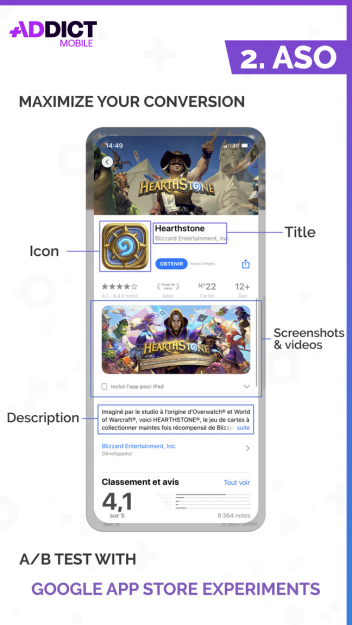
You need to analyze the conversion rates of your store page. There are several methods for doing this.
1. Use the Google tool available for free on the Developer Consol to test your Android page: the Store Listing Experiments.
This tool enables A/B testing of store pages on a defined audience, allowing you to gather conversion results for each test.
Addict Mobile strongly encourages every app publisher to use this powerful tool. It facilitates precise A/B tests with quick learning. The insights gained can be replicated on iOS.
On iOS, it is also possible to carry out various tests, but the tool remains more limited than on Google Play.
2. Analyze user conversion rates (install / clicks), coming from your soft launch acquisition campaigns.
Please note that this method is less precise and provides less information than Store Listing Experiments. It involves testing on a similar audience: 2 different store pages over 2 distinct periods. Addict Mobile recommends organizing this testing phase carefully. Here are some tips:
- Facebook is the most effective source for testing because it allows precise targeting, in any case on Android. Indeed, the limitations of ATT on iOS may impact data reading.
- Conduct the test only on Facebook News Feed or Instagram News Feed (no stories). It requires an iso environment. For example, Facebook’s audience network has significantly different conversion rates (CVR).
- Select an affinity target that will be the same in both tests. Avoid lookalikes; prefer a specific interest.
- Create the same campaign setup (bidding, demographics, etc.).
Use only one creative if possible and, most importantly, the same format between each test. Testing a static creative and a video will change your conversion rates.
3. Some providers offer to A / B test your store pages with dedicated (and paid) services that offer a thorough and detailed analysis.
Explore the 2nd and 3rd part of this series of articles.
Need help launching your game? Don’t hesitate to contact us for help with these logics.
Author: Manuel Pacreau, User Acquisition Director @Addict Mobile
With more than 10 years of expertise in Mobile acquisition, Manuel has managed Addict Mobile Adops teams since 2016
NEWS
Article in relation
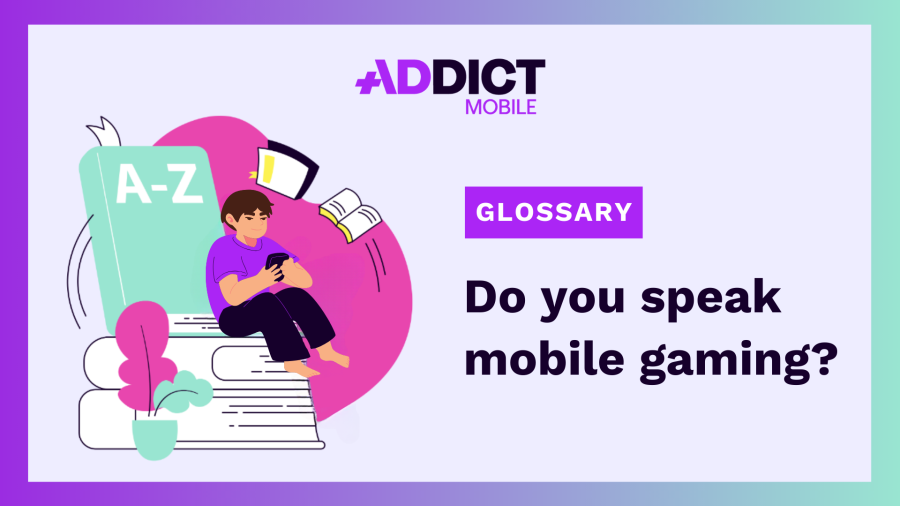
Do you speak mobile gaming?
With 2.2 billion active mobile gamers worldwide and consumer spending reaching $107.3 billion in 2023, the mobile gaming market remains a thriving sector....
Published on 18 March 2024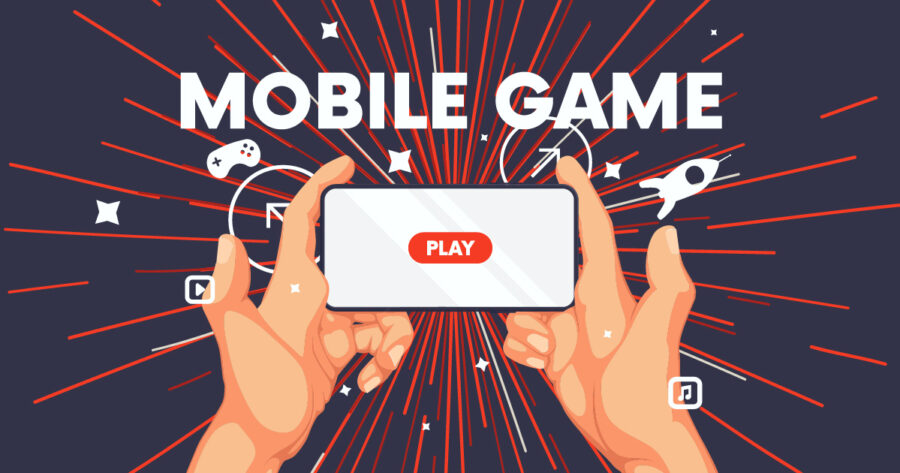
(Part 3) Soft launch: our key tips to…
In our previous two articles (part 1 and part 2), we talked about the key points to follow during a mobile game soft...
Published on 15 January 2024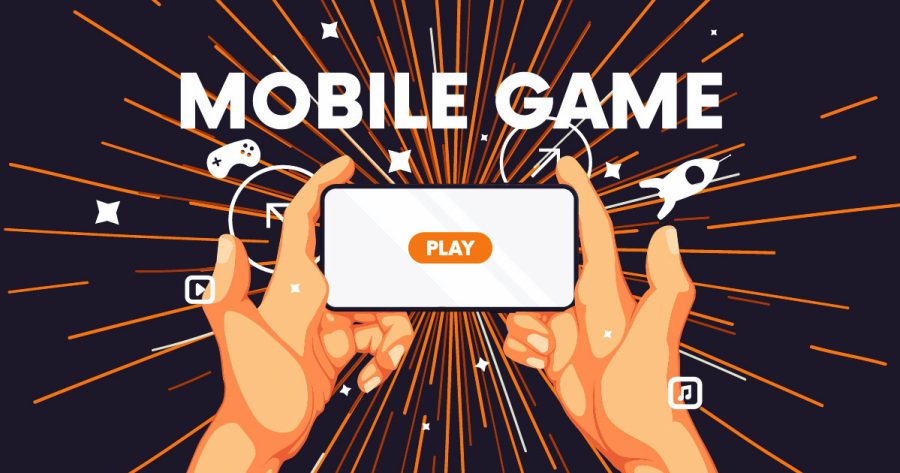
(Part 2) Soft launch: our key tips to…
In our first article, we explained the importance of a soft launch for the release of a mobile game: how to correctly identify...
Published on 18 December 2023

